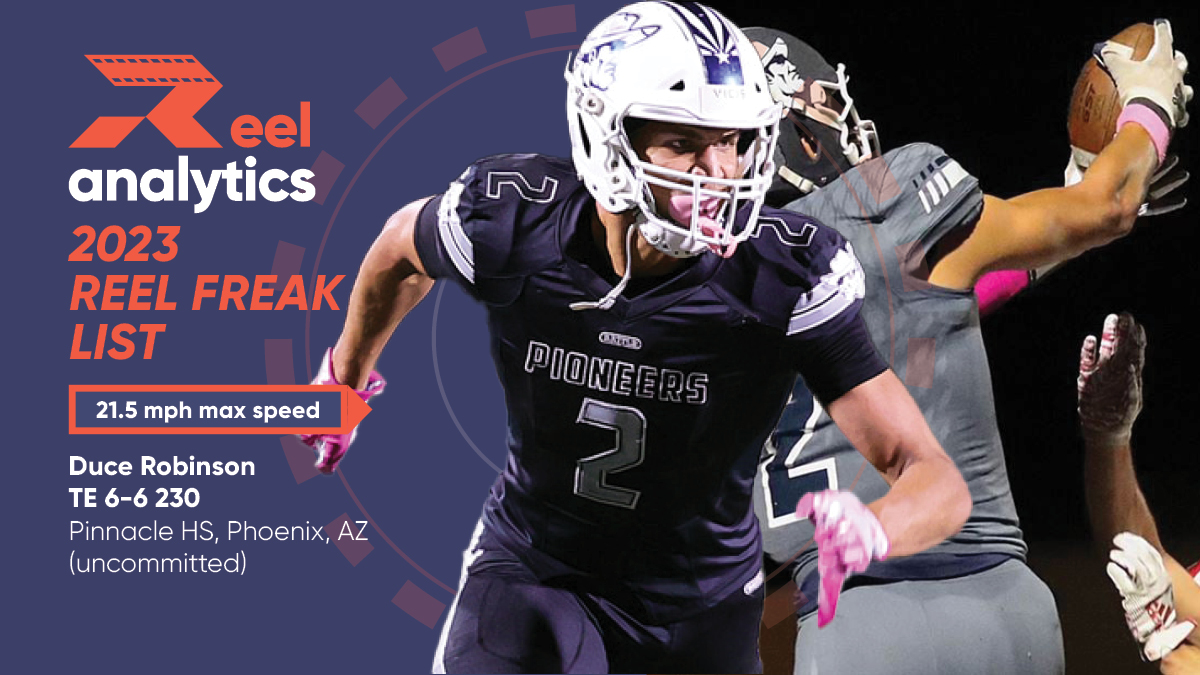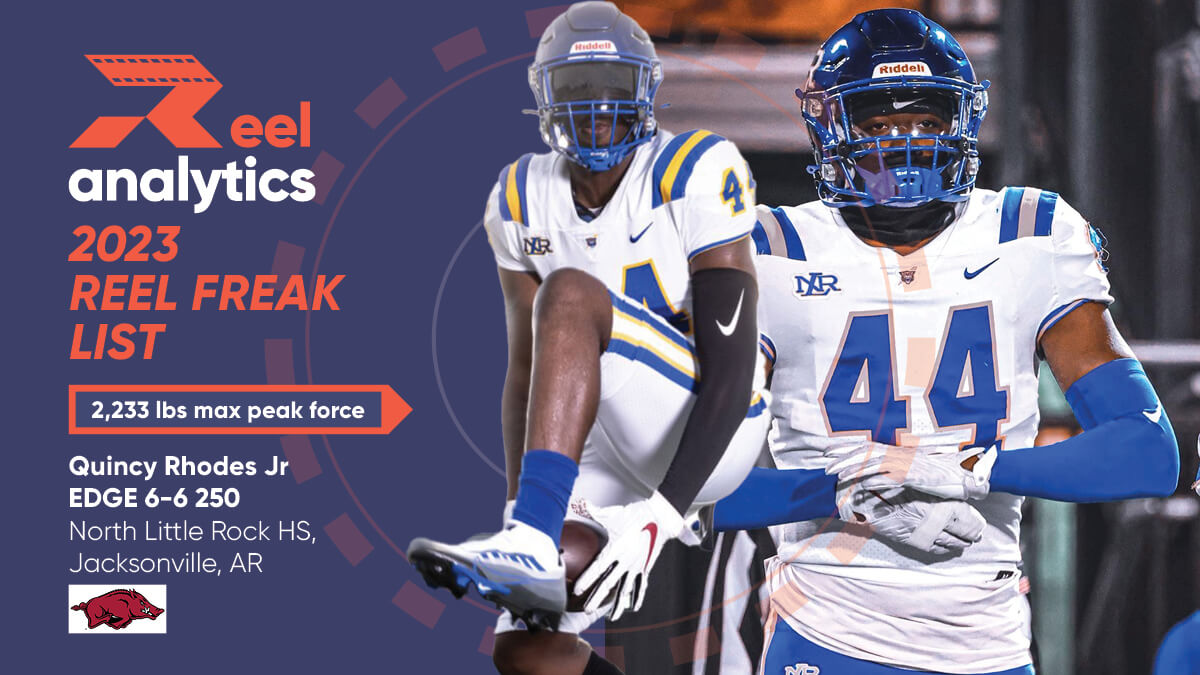Reel Analytics’ studies show that past performance can be a strong indicator of future success at the highest level of the sport
Leveraging the power of computer vision technology, RA found that the requisite traits found in NFL players can be identified as early as high school. Computer vision technology enables evaluators to analyze the high school tracking data of successful players from the past to detect the trait(s) that made him ‘special’. This type of retrospective analysis allows college coaches to establish position-specific performance thresholds used to evaluate high school prospects, and to serve as early indicators of future success. For NFL coaches and personnel executives, high school tracking data, among many things, provides deeper insights into the progression of a draft prospect’s raw and functional athleticism.
Reel Analytics’ evaluation methodology consists of two main factors: an In-Game Athleticism Score (IGA Score) and a Production Score (PROD Score), which are both used to determine the RA Score that serves as the final overall player grade. Reel Analytics’ IGA Score derives from objective evaluative metrics extracted by their AI-powered tracking technology, and Reel Analytics’ PROD Score derives from objective advanced performance metrics.
The findings from Reel Analytics’ retrospective study of nearly 500 players from 2011 to 2020 show that RA’s scoring models’ overall projection accuracy is 75.5%, a hit-rate that is 3X higher than college football’s average, and more than 2X vs.the NFL average.”




